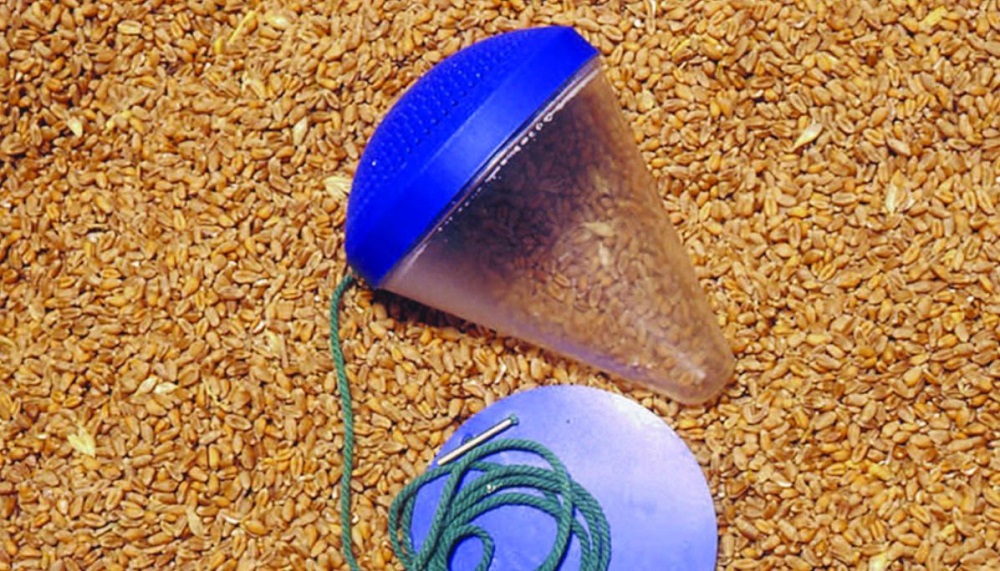- Home
- Knowledge library
- Monitoring insect and mite populations in grain stores
Monitoring insect and mite populations in grain stores
During storage, frequent monitoring for the presence of insects and mites is essential. Regular measurement of temperature and moisture is also important, as increases may point to emerging pest problems.
How the grain store environment affects pest (fungi, insects and mites) levels
Pest monitoring: traps vs sampling
Due to complex environmental conditions and insect behaviour, a simple relationship between actual insect numbers and the quantities caught in traps cannot be accurately determined. However, traps do provide an indication of population trends. Traps are also up to ten times more effective than grain sampling at detecting low numbers of pests.
Pest monitoring: trapping tips
- Some traps are designed for use in the store, others for use within the grain bulk
- Place traps 4–5 m apart
- Position traps within the grain bulk on the surface and around 5–10 cm below the surface (e.g. a combination of probe and pitfall cone traps in pairs) to target different insect and mite species with different behaviours
- Ensure that insect bait traps do not contain allergens (e.g. nuts)
- Monitor weekly, until grain reaches and stays at 5°C, then monitor monthly
- Additionally, check for storage mites in the surface layer of the grain
- Traps should be accounted for each time they are examined and a permanent record of the contents kept
- Record-keeping, either electronically or on paper, will illustrate due diligence and enable changes in grain condition to be readily identified. This can provide an early warning of potential problems
- If pests are detected, increase the number of traps to determine extent of infestation and consider the need for treatment
How to identify insects and mites
Our website includes images of over 50 insect and mite species that may occur in grain stores. It covers the primary insect pests, as well as secondary pests, mites, moths and booklice. Correct identification is important to determine the appropriate management response.

Topics:
Sectors:
Tags:

